I was looking for a small epiphytic plant to grow on the large biOrb Amazonas Root aquarium ornament. To look neat this is going to have to be a small plant of either Anubias or Bucephalandra genus and one of the smallest is an albino variant of Anubias barteri var. nana, which itself is a dwarf variant of the much larger Anubias barteri. The idea of having small white drifts of epiphyte representing ‘snow’ on the ‘mountain’ of the sculpture was irresistable, and I had to give it a try.
Albino plants can’t live
At least this is mostly true. Plants use chlorophyll to absorb energy in light to ultimately convert CO2 into sugars the plant can use for metabolism. Chlorophyll absorbs green light very poorly so this is reflected from the plant surface, making plants look green*, whilst the blue and red light components of white light are absorbed as the energy source. For plants to look white when illuminated with white light, they can’t absorb any of the light, which means no chlorophyll, no source of energy and ultimately no growth.
Anubias nana ‘Snow White’ can grow in tissue culture
Clearly, this plant can be propogated successfully in the lab emersed in growth media, producing wonderful looking in vitro tissue culture pots. Although the leaves are nearly entirely white, and hence from an energy-producing point of view purely decorative, the rhizome is still green. That means in theory so long as the plant can get sufficient energy from photosynthesis in the rhizome to pay the cost of producing the decorative but non-functional leaves, it may be able to survive and grow. That was the hope anyway.
Anubias nana ‘Snow White’ fails to thrive in the aquarium
I still had some hope for this plant five weeks after it went into the aquarium, but there were signs things were not going in the right direction. Whilst it’s normal for a plant grown emersed in the nursery produced for sale to have to adapt the leaves from life above water to life underwater, there should not be a need to adapt the roots, which have been submerged the whole time. So you’d like to see healthy-looking roots, even if the leaves look rough during the emersed to submersed transition, but 5 weeks later it looks like the roots are rotting away. Where the roots should be starting to grab onto the surface, these plantlets kept getting knocked off their perch (probaby by the snails) and that happened more frequently with time. After 10 weeks in the aquarium there essentially aren’t any roots left and the rhizome is also showing signs of rotting at the tips. This is not the direction we’d like these things to go… I like to give plants a fair shout at adapting to their new life underwater but I think it’s clear these guys aren’t going to work out. For what it’s worth, others have likewise been enamoured of the concept of white-leafed plants in the aquarium, but there are a lot of stores of bewilderment, failure and frustration and not a lot of successful bragging. I actually suspect that in those rare cases where you see good-looking Anubias nana ‘Snow White’ in aquarium photos, those shots represent plants newly removed from tissue culture rather than long-term healthy propogation in the aquarium.
Try some Bucephalandra
So, what happens now? I’d still like to have a go with some epiphytes on the sculpture and there are some small-leaved species of Bucephalandra that might be suitable. These come in a variety of colours (but not white!) so instead of snow on the mountain I’m going to see about having some “trees on the mountain”.
Variegated plants CAN live

Fast-forward a few years and I have had wonderful success with Anubias nana ‘Pinto’, which has marbled green/white leaves instead of pure white. This is a much larger plant than Anubias nana ‘Snow White’, more in line with the size of non-variegated Anubias barteri nana. Having a little bit of green makes all the difference. You can tell this plant is a goer because you can buy it in regular pots, not just in tissue culture. I don’t think anyone sells ‘Snow White’ in pots, probably because it is impossible to grow it that way!
*Red plants still have chlorophyll
A variety of leaf pigments influence apparent plant colour. Red plants like ludwigia palustris mini ‘Super Red’ still have chlorophyll, but they also have anthocyanins which absorb blue/green light, leaving red behind. So long as the plant is in good lighting and can get by with low chlorophyll levels absorbing the red light for energy, there is enough red light left over to provide a strong red pigmented appearance.
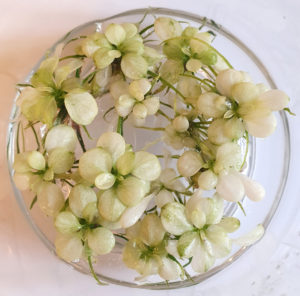
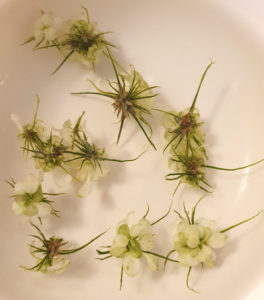
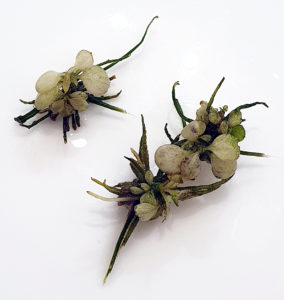
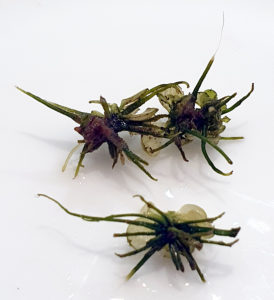
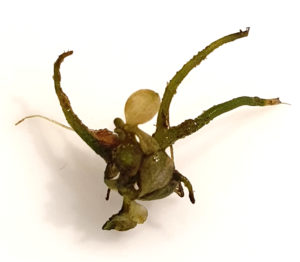
Damien Beri says:
Thanks for this info. I have spent hundreds of dollars with Aquarium Plant factory trying to cultivate these in my aquarium and the exact same things happen to my anubias Snow White. I have reached out to them and they have mentioned nothing about “only growing in-vitro” just that they use “2-3” watts/gallon to grow them. I asked if they grow in gel or aquarium and haven’t gotten a response yet so waiting to hear back. Out of the 50 small pieces I purchased, a single one that is 50% green appears to be working. I will note that the rhizome roots on this rather larger piece are extremely long, like rediculously long in comparison. I am wondering if the root/rhizome length has anything to do with survivability.
Andy Pierce says:
I know it’s not the pure albino white you were hoping for, but Anubias barteri nana ‘Pinto’ has interesting leaves that are variegated white and green and that grows very successfully for me.
Sam says:
Make sure the plant has a good amount of rhizome.It is the only way to know of the plant will survive. Less/small rhizomes will be hard of plant to grow. You can also try trimming the leaves and root if there is a small rhizome
Brooks says:
Have these growing fine, know many others who have as well. Don’t think you’re providing enough for them, took me a couple tires
Tyler says:
Does it have to have C02? I’ve had mine growing emersed since I got them because I’m afraid I’ll kill them if I put them in water without it. Noob here.
Adi says:
What you doing different please. Just got mine and would like it to make it
Peter says:
Whats your secret? Do you mind sharing. I just got two of these.
Chris says:
Don’t lie. They all dead now.